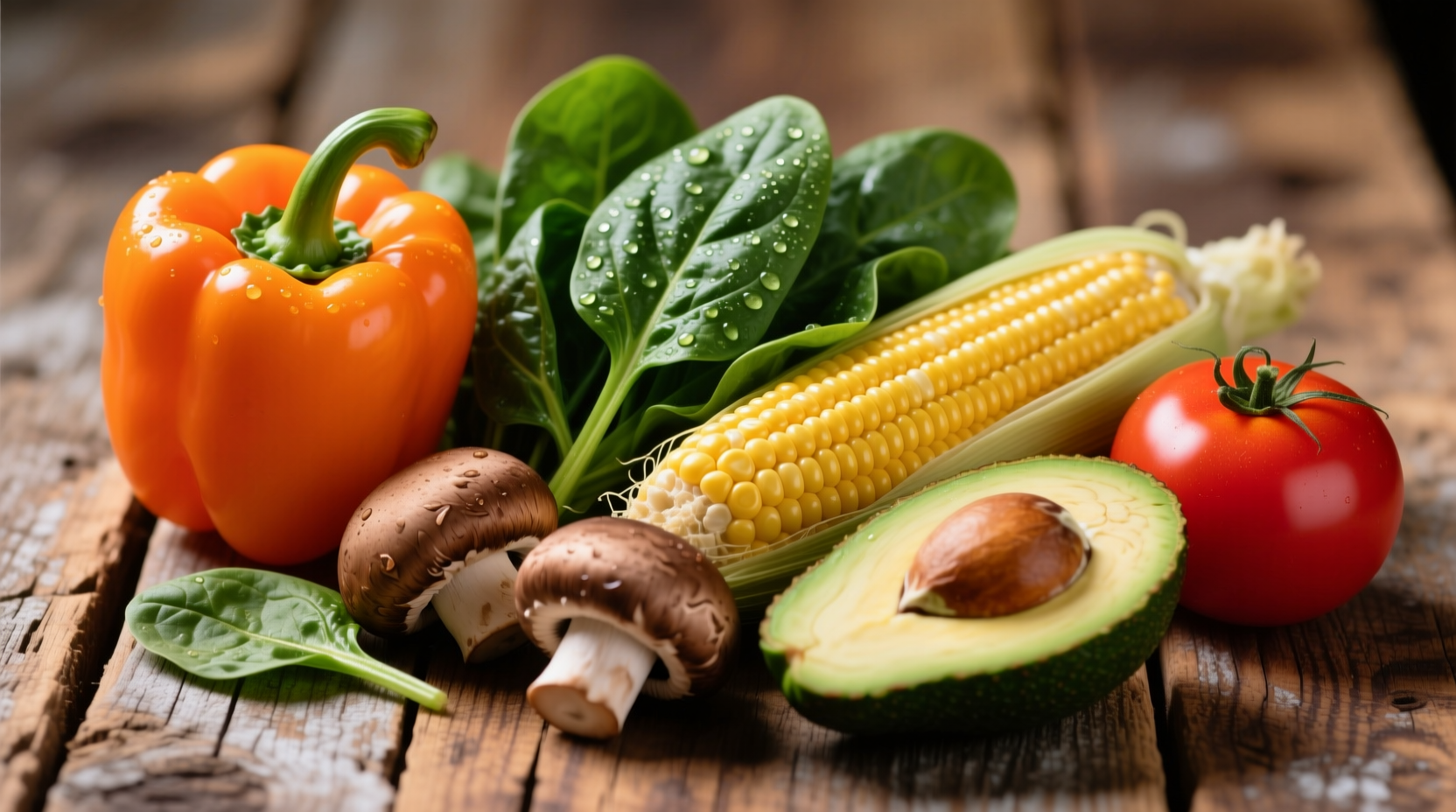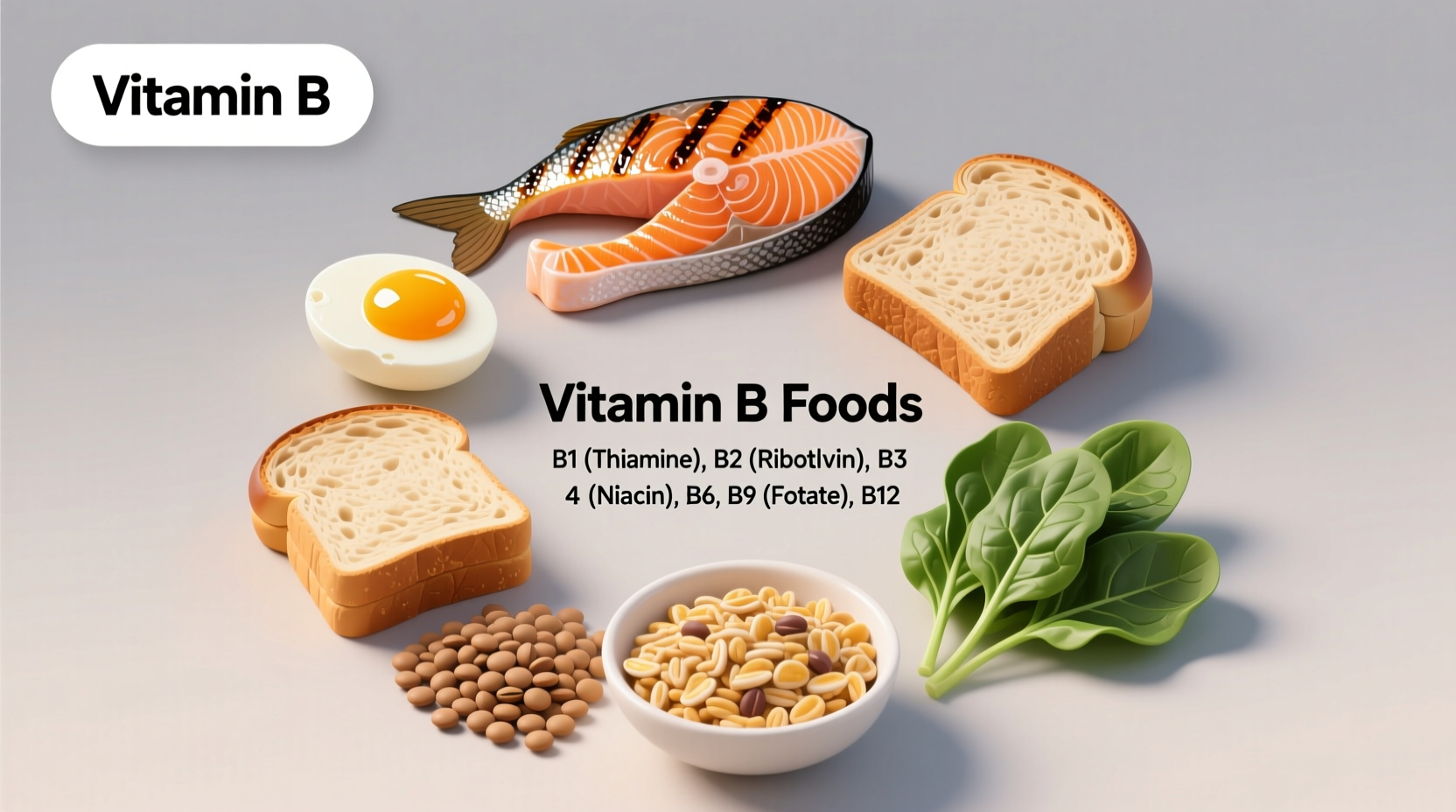The most comprehensive answer to 'what foods are vitamin B' is that B vitamins exist as a complex of eight distinct nutrients found in diverse food groups. Vitamin B1 (thiamine) appears in whole grains and pork; B2 (riboflavin) in dairy and eggs; B3 (niacin) in poultry and fish; B5 (pantothenic acid) in mushrooms and avocados; B6 in bananas and chickpeas; B7 (biotin) in nuts and seeds; B9 (folate) in leafy greens and legumes; and B12 almost exclusively in animal products like meat, fish, and dairy. A balanced diet incorporating these varied sources ensures optimal B vitamin intake for energy metabolism, brain function, and cellular health.
Discover exactly which foods deliver each essential B vitamin and how to maximize their benefits in your daily meals. This guide provides science-backed food recommendations that address common deficiency concerns while fitting seamlessly into your eating habits.
Understanding the B Vitamin Family
B vitamins work as a dynamic team supporting critical bodily functions from energy production to neurological health. Unlike fat-soluble vitamins, these water-soluble nutrients require regular dietary replenishment since your body doesn't store them long-term. The eight B vitamins each play unique roles:
| Vitamin | Primary Functions | Daily Requirement (Adults) |
|---|---|---|
| B1 (Thiamine) | Energy metabolism, nerve function | 1.1-1.2 mg |
| B2 (Riboflavin) | Skin health, red blood cell production | 1.1-1.3 mg |
| B3 (Niacin) | DNA repair, cholesterol management | 14-16 mg |
| B5 (Pantothenic Acid) | Hormone synthesis, nutrient metabolism | 5 mg |
| B6 (Pyridoxine) | Brain development, immune function | 1.3-1.7 mg |
| B7 (Biotin) | Hair, skin, and nail health | 30 mcg |
| B9 (Folate) | Cell division, fetal development | 400 mcg DFE |
| B12 (Cobalamin) | Nerve function, red blood cell formation | 2.4 mcg |
According to the National Institutes of Health Office of Dietary Supplements, approximately 15% of adults over 60 have marginal B12 status, while folate deficiency remains a concern during pregnancy. These statistics highlight why understanding natural food sources matters for targeted nutritional planning.
Your Practical Guide to B Vitamin Food Sources
Let's explore exactly which foods deliver each B vitamin, organized by what you'll actually find at your grocery store or farmers market.
Vitamin B1 (Thiamine) Power Foods
Thiamine deficiency can cause fatigue and neurological issues. The best natural sources include:
- Black beans (¼ cup cooked: 0.4 mg)
- Sunflower seeds (¼ cup: 0.5 mg)
- Pork tenderloin (3 oz: 0.7 mg)
- Fortified breakfast cereals (1 serving: varies)
Vitamin B2 (Riboflavin) Essentials
Riboflavin keeps your skin glowing and supports energy production. Prioritize these foods:
- Organ meats like liver (3 oz: 2.9 mg)
- Plain Greek yogurt (1 cup: 0.6 mg)
- Almonds (¼ cup: 0.5 mg)
- Spinach (½ cup cooked: 0.2 mg)
Vitamin B3 (Niacin) Boosters
Niacin helps convert food into usable energy. Incorporate these high-niacin foods:
- Tuna (3 oz: 11.3 mg)
- Chicken breast (3 oz: 7.3 mg)
- Peanuts (¼ cup: 4.3 mg)
- Mushrooms (½ cup cooked: 2.5 mg)
Vitamin B5 (Pantothenic Acid) Sources
This often-overlooked vitamin supports hormone production. Find it in:
- Mushrooms (½ cup cooked: 3.6 mg)
- Avocado (½ fruit: 0.9 mg)
- Salmon (3 oz: 0.9 mg)
- Sun-dried tomatoes (¼ cup: 0.8 mg)
Vitamin B6 (Pyridoxine) Staples
B6 deficiency affects mood and immunity. These foods deliver substantial amounts:
- Chickpeas (½ cup cooked: 0.6 mg)
- Yellow banana (medium: 0.4 mg)
- Potato with skin (medium: 0.4 mg)
- Fortified breakfast cereals (1 serving: varies)
Vitamin B7 (Biotin) Options
Biotin supports keratin infrastructure. Natural sources include:
- Egg yolks (1 large: 10 mcg)
- Almonds (¼ cup: 1.5 mcg)
- Sweet potato (½ cup cooked: 0.5 mcg)
- Whole wheat bread (1 slice: 0.2 mcg)
Vitamin B9 (Folate) Essentials
Folate is crucial for cell division and fetal development. Prioritize these foods:
- Black-eyed peas (½ cup cooked: 105 mcg)
- Spinach (½ cup cooked: 131 mcg)
- Fortified breakfast cereals (1 serving: varies)
- Beef liver (3 oz: 215 mcg)
Vitamin B12 (Cobalamin) Solutions
B12 deficiency causes neurological issues and anemia. The most reliable sources are:
- Clams (3 oz: 84 mcg)
- Beef liver (3 oz: 70 mcg)
- Salmon (3 oz: 4.8 mcg)
- Fortified nutritional yeast (1 tbsp: 2.4 mcg)

Maximizing B Vitamin Absorption
Knowing what foods contain B vitamins is only half the equation. How you prepare and combine them affects nutrient availability:
Cooking Methods That Preserve B Vitamins
Since B vitamins are water-soluble, they leach into cooking water. Use these techniques to retain maximum nutrients:
- Steam vegetables instead of boiling
- Use cooking liquid from vegetables in soups or sauces
- Roast or grill meats rather than boiling
- Store cut fruits and vegetables in airtight containers
Smart Food Pairings for Enhanced Absorption
Certain combinations boost B vitamin effectiveness:
- Pair folate-rich spinach with vitamin C-rich lemon juice
- Combine B12-containing salmon with omega-3 rich walnuts
- Eat whole grains with vitamin C foods to enhance B6 absorption
- Add healthy fats to fat-soluble B vitamin carriers like eggs
Special Considerations for Different Diets
Your dietary pattern affects which B vitamins require special attention:
Vegan and Vegetarian B Vitamin Strategies
Plant-based diets require planning for certain B vitamins:
- B12 must come from fortified foods or supplements
- Combine legumes with whole grains for complete B vitamin profiles
- Soak and sprout grains to increase bioavailability of B vitamins
- Consider nutritional yeast as a versatile B vitamin source
The Academy of Nutrition and Dietetics confirms that well-planned vegetarian and vegan diets can meet all nutritional needs, but B12 supplementation is essential for those avoiding all animal products.
Age-Specific B Vitamin Needs
Nutritional requirements change throughout life:
- Older adults often need more B12 due to decreased absorption
- Pregnant women require additional folate (B9) for fetal development
- Teens need increased B vitamins during growth spurts
- People with digestive disorders may need targeted supplementation
Building Your B Vitamin-Rich Meal Plan
Transform this knowledge into practical eating habits with these simple strategies:
7-Day B Vitamin Meal Framework
Create balanced meals using this template:
- Breakfast: Fortified cereal with milk and banana (B2, B6, B12)
- Lunch: Spinach salad with chickpeas, sunflower seeds, and salmon (B2, B6, B9, B12)
- Dinner: Chicken with black beans and roasted mushrooms (B3, B5, B6)
- Snacks: Greek yogurt with almonds or hard-boiled eggs
Grocery Shopping Checklist
Keep your pantry stocked with these B vitamin powerhouses:
- Leafy greens (spinach, kale)
- Legumes (black beans, chickpeas)
- Whole grains (brown rice, quinoa)
- Nuts and seeds (sunflower seeds, almonds)
- Fatty fish (salmon, tuna)
- Eggs and dairy products
- Fortified nutritional yeast
Simple B Vitamin Boosting Recipes
Try these quick preparations:
- Morning Power Smoothie: Spinach, banana, Greek yogurt, and sunflower seeds
- Lunchtime Super Salad: Mixed greens, chickpeas, hard-boiled eggs, and avocado
- Dinner Power Bowl: Quinoa, black beans, roasted mushrooms, and grilled chicken
When Food Isn't Enough: Understanding Supplementation
While food should be your primary source, certain situations warrant supplementation:
- Vegans require B12 supplements
- Older adults may need B12 supplements due to absorption issues
- Pregnant women often require additional folate
- People with digestive disorders might need targeted supplementation
Always consult with a healthcare provider before starting supplements, as excessive intake of certain B vitamins can cause adverse effects. The Mayo Clinic recommends getting nutrients primarily from food sources whenever possible.











 浙公网安备
33010002000092号
浙公网安备
33010002000092号 浙B2-20120091-4
浙B2-20120091-4